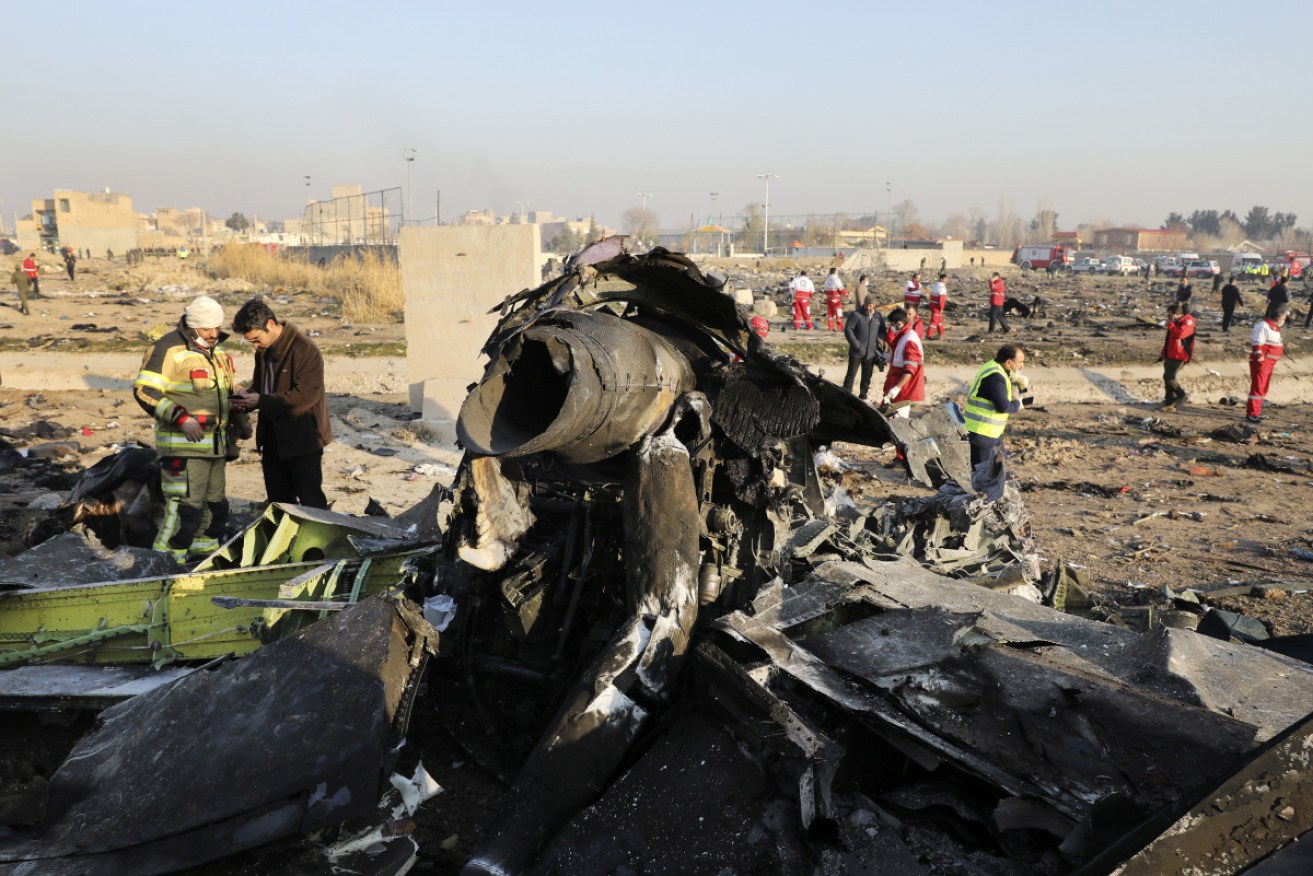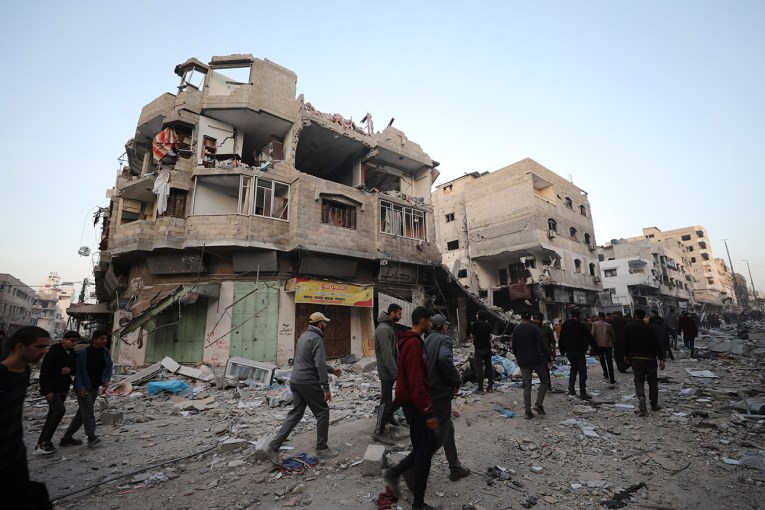Evidence shows missile downed jet: US, Canada


Debris from the Ukrainian plane which crashed in Shahedshahr southwest of the capital Tehran. Photo: AAP
Dramatic footage has emerged of the moment a Ukrainian jetliner was hit by a missile as Canadian Prime Minister Justin Trudeau joined others to claim Iran shot down the plane, killing all 176 passengers and crew.
The video, verified by The New York Times, appears to show a small explosion mid-air over Parand, a city near the airport, with the Boeing 737-800 continuing to fly for several minutes before crashing.
About 10 seconds passes from the flash of what is believed to be the missile and the sound of the explosion reaching the camera.
With at least 63 Canadians on board the Ukraine International Airlines flight PS752, Mr Trudeau told reporters on Friday morning (Australian time).
“The evidence indicates that the plane was shot down by an Iranian
surface-to-air missile. This may well have been unintentional,” he said.
“This new information reinforces the need for a thorough investigation into this matter.”
Australian Prime Minister Scott Morrison told the ABC Australia had received the same intelligence as the US and Canada and, “it does not suggest that this was intentional”.
Mr Morrison said he spoke to Mr Trudeau about any support Australia could provide.
“If there’s anything we can do to assist then of course we will,” he told the ABC’s AM program.
He later told a press conference it was a terrible event to which Australia would provide whatever support it could.
“It’s absolutely critical that a full and transparent investigation is undertaken into this terrible event and that would include undertaking all efforts to ensure we get recovery of the black box recorder that can obviously inform that investigation,” he said.
Iran’s head of civil aviation denied reports Iran was to blame as “illogical rumours”.
“Scientifically, it is impossible that a missile hit the Ukrainian plane and such rumours are illogical,” the semi-official ISNA News Agency quoted Ali Abedzadeh as saying.
The catastrophic incident came just a few hours after Iranian forces fired more than a dozen missiles at military bases housing US troops in Iraq.
The missile attack followed a confrontation with Washington over the US drone strike that killed an Iranian Revolutionary Guard general last week.
One US official, speaking on condition of anonymity, said US satellites had detected the launch of two missiles shortly before the plane crashed, followed by evidence of an explosion.
The data showed the plane was airborne for two minutes after departing Tehran when the heat signatures of two surface-to-air missiles were detected, one said.
That was quickly followed by an explosion in the vicinity of the plane. Heat signature data then showed it on fire as it went down.
#Satellite imagery from today, January 9th, of the Ukrainian passenger airplane crash site near Khalaj Abad, #Iran showing the lengthy debris field and burned area, with visible search and recovery vehicles nearby. #ukraineplanecrash pic.twitter.com/OJgObd1jKc
— Maxar Technologies (@Maxar) January 9, 2020
Speaking to reporters, US President Donald Trump said the crash could have been a mistake, adding he had a terrible feeling about the downed airliner but offered no evidence.
Mr Trump dismissed Iran’s claims that the cause was a mechanical issue – and denied any US responsibility.
“Somebody could have made a mistake on the other side,” he said, noting the plane was flying in a “pretty rough neighbourhood”.
“Some people say it was mechanical … I personally don’t think that’s even a question.”
The plane was carrying 82 Iranians, 63 Canadians, 10 Swedes, four Afghans, three Germans, and three British nationals. The remaining eleven people killed in the fiery crash were Ukrainians.
Iran’s aviation authority has refused to hand over flight recorders from the plane, either to the aircraft’s manufacturer or US aviation authorities.

The Ukrainian Boeing 737-800 plane that crashed near Tehran. Photo: AAP
Under international rules, responsibility for investigating the crash lies with Iran. Iranian state television said both of the plane’s black box voice and data recorders had been found.
Former Professor of Aircraft Systems at Tampere University in Finland Steven Wright told the ABC on Friday morning there were “telltale characteristics” which would quickly become apparent if it was a ground-to-air missile, “such as the peppering, very small holes of where the missile will detonate before it touches the aircraft … and then the schrapnel shreds the aircraft”.
Professor Wright said it was not going to be difficult to swap traces of explosives on the debris of the aircraft and this forensic evidence “will turn up immediately”.
Immediately after the crash, Iran’s semi-official Fars news agency attributed the airliner’s plunge into a field outside the Tehran to “technical problems” – an explanation that surprised experts who noted the aircraft’s black boxes had not yet been recovered and that such investigations usually take months to reach a determination.
Ukraine officials initially endorsed the diagnosis of mechanical failure, only to change their minds within hours, saying they had not ruled out the possibility that the airliner was brought down by a missile or an attack.
They noted that the plane, one of Boeing’s most reliable models, had been serviced within the past week and was only three years old.
-with AAP








